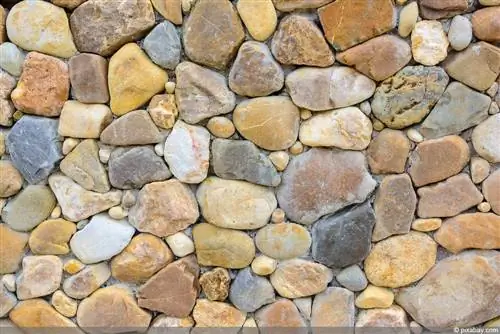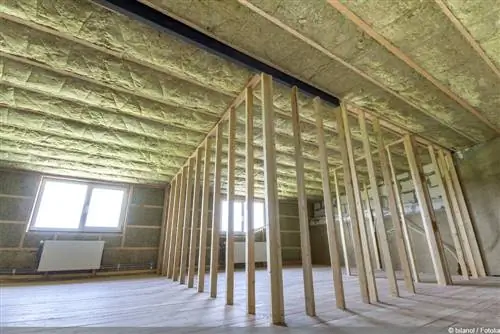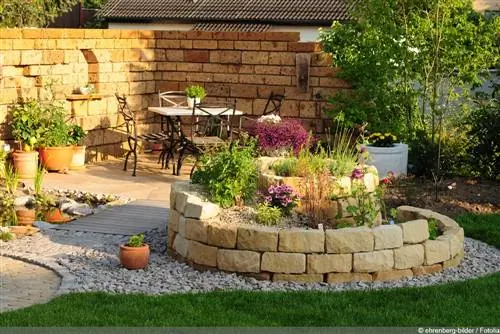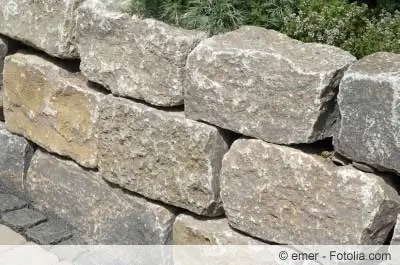- Author admin [email protected].
- Public 2023-12-17 03:39.
- Last modified 2025-01-24 12:45.
Building a Frisian wall yourself requires muscle strength and patience. Planning is an important step so that you don't suddenly find yourself without materials during construction. With this guide you can get an initial overview of the possible total costs for the project. However, deviations are possible because the prices for building materials vary depending on the company.
The term Friesenwall
This type of wall has its roots in Friesland. The marshland characterizes large parts of the region and offers people hardly any opportunities to obtain building materials. Wood is rare in open country and there are no quarries in the northern German region. To build a property boundary, people used other materials from nature. They used boulders and rubble from the fields and piled up the stones to form a wall that was about waist high. So that the stones remained in their position, earth was poured into the gaps. This natural stone wall has prevailed to this day and finds fans all over Germany, because a Frisian wall offers many advantages:
- Unique character, because stones vary in shape, size and color
- offers habitats for drought-loving animal and plant species
- primal aesthetics
- natural artwork
- manageable costs by reusing materials from the garden
Building instructions
Consider whether you can find specific materials for the natural stone wall on your property. When excavating large pits, a lot of earth is produced, which is perfect for fortifying the wall. Costs for companies can be saved if you dare to build the wall yourself.
Foundation

The natural stone wall does not require a solid foundation. It is enough to create a bed of gravel or sand 20 centimeters thick. The width depends on the desired extent of the wall. Dimensions between 80 and 100 centimeters are common. Dig a 20 centimeter deep pit of the appropriate length and width and fill it with sand. The sand bed is compacted well before you spread the excavation in the middle of the sand bed. If you build a wall ten meters long and one meter wide, you will need about 3.2 tons of sand. Here you have to reckon with these costs for buying sand:
- Price per ton: 15 to 20 euros without delivery
- Total costs: 48 to 65 euros
Set curbs
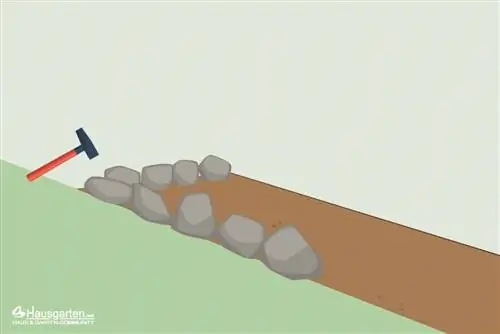
The edge attachment consists of large stones that ideally have a pointed side. Use the larger stones with a diameter of 50 centimeters for this. The smaller material will later be used to build the wall. Place the tip down and tap the stones into place with a setting hammer. This measure involves compacting the soil around the stones. If you cannot get your own stones from the ground on your property, get the material from a building materials store or specialist store. For one square meter you need about half a ton of stones. Depending on the type of rock, you will incur different costs:
- Porphyry: 50 euros per ton
- Granite: between 55 and 100 euros per ton
- Dolomite and bas alt: 65 to 120 euros per ton
Fill up soil
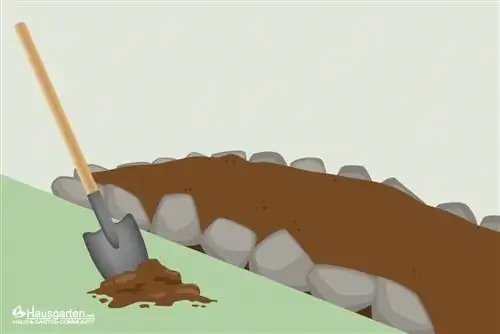
After you have set the border, the interior is filled with soil. It gives additional support to the layers of stone, which you will later stack slightly inwards. If the soil trickles out of the gaps, you should moisten the material slightly. Use a hammer handle to compact the soil between the stones. The excavation from the pit is not enough to completely fill an 80 centimeter high and ten meter long wall with earth. Therefore, you should get additional bags of soil from the hardware store.
- Price per square meter: three to four euros
- Total costs: 20 to 30 euros
Laying up the wall
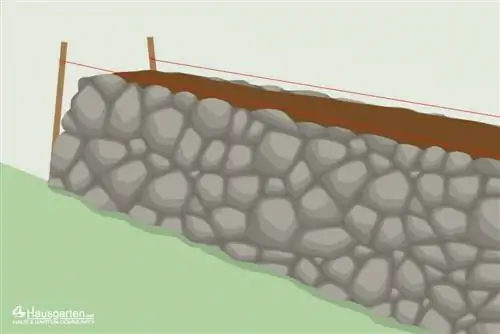
The wall slowly develops as you pile up stones one after the other and fill the interior with earth. The Frisian Wall slopes slightly inwards at the end. This shape offers the wall a high level of stability and excess rainwater can drain down the slope to the ground. Place a wooden stick in the ground at all corners of the wall and stretch a string between the sticks. This is aligned at a 15 degree angle to the basic stone layer, so you always keep an eye on the slope of the wall. After you have reached the desired height, the last stones are placed on the upper plateau of the wall.
Tip:
You can also lay turf between each layer of stone to secure the soil inside. Cut narrow strips and place them in the vertical and horizontal joints.
Planting instructions
You can let your imagination run wild when planting the wall. Dry stone walls look great with both low ground cover plants and taller shrubs or roses. Since these habitats are particularly exposed, you must water the plants regularly during the growing phase.
Longsides
When planting on the sides of the wall, you should take into account how much rainfall the plants receive at their growing locations. Plant drought-tolerant ground cover plants on slopes that hardly receive any rain. Ideal plants for these areas are hornwort, sedum, stonecrop and rock medlar. The side that is more often exposed to direct precipitation is embellished with moisture-loving creepers. Chickweed feels particularly at home here.
Note:
Use a bulb planter to make a hole in the substrate between the stones. With this tool you can get deep enough into the interior of the wall without too much earth trickling out of the gaps.
wall plateau
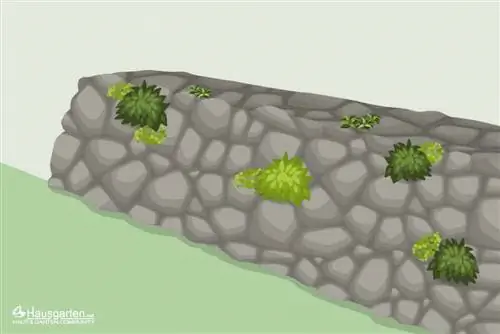
Fill the stone joints on the wall with a mixture of sand and soil and water the substrate thoroughly so that it settles. Caution is required here as the material is easily washed away. Drought-loving ground cover plants, grasses and upholstery perennials feel particularly at home on the plateau. An arrangement of saxifrage, sorrel, common cinnamon and houseleek provides bright colors and offers butterflies and insects a valuable source of food. You can also put Mediterranean herbs or heat-loving vegetables on the wall. Planting costs vary depending on the species selection. If you plant pre-grown plants on the wall, the total cost per meter will be slightly higher compared to sowing seeds.
- Price for planting per meter: between five and ten euros
- Total costs for ten meters: 50 to 100 euros

